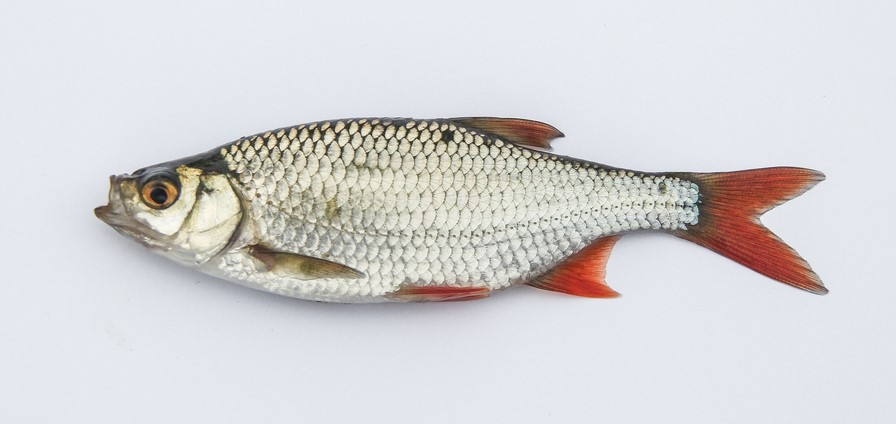
Rudd (Scardinius erythropthalmus) is native to Great Britain and Europe east to the Ural and Emba Rivers, Asia Minor, Caucasia, and Transcaucasia, south coast of the Caspian Sea, Finland (to 63 N), the Aral Sea Basin, but is absent from Ireland, Greece, and Spain. Scattered introductions of S. erythropthalmus (Rudd), presumably as a sport fish, were made in the early 20th century. This fish was reported from Philadelphia, Central Park, New York (1879), Jersey City New Jersey (1925), Columbia County NY (1937), Ithaca New York(1950's). It was introduced to Waudesha County, Wisconsin (1917) by Wisconsin Fish and Game Department. In 1984, the only known North American populations were in Columbia County, New York. and a lake near Augusta Maine . In the early 1980's, Rudd began to be extensively reared and shipped by bait dealers in Arkansas. Fisheries biologists and regulatory agencies were unaware of the extensive introduction of this species until 1988. (Burkhead and Williams 1992). By 1996 it was known from 24 states and Canada. In New York, it is established in Lake Ontario, the St. Lawrence River, Oneida Lake, and the Hudson River. In the Chesapeake Bay watershed, S. erythropthalmus was reared and distributed by Perry's Minnow Farm, Windsor VA (James-Dismal Swamp drainage). It has been collected in the upper Susquehanna (NY, PA) Potomac, York, and Rappahannock drainages, and in the New River WV (Ohio drainage) (Easton et al. 1993). Rudd were sold as bait-fish in PA, prior to 1990, when bait dealers were notified of its illegal status in that state. A subsequent survey of bait shops found no Rudd. Since Rudd are a legal baitfish in NY, introduction to the Susquehanna is possible there . Scardinius erythropthalmus is established in Otsego and Canadaroga lakes, in the Susquehanna's headwaters, and could be breeding in other locations in the watershed as well In Massachusetts, it is established in the Charles River This species has been introduced to New Zealand. In the United Sates, it was sold as a bait attractive to hybrid "Wiper,' bass (Morone saxatilis X chrysops, White X Striper), widely stocked in US reservoirs, Potentially, it s a competitor with the Golden Shiner (Notemigonus chrysoleucas), with which it also hybridizes